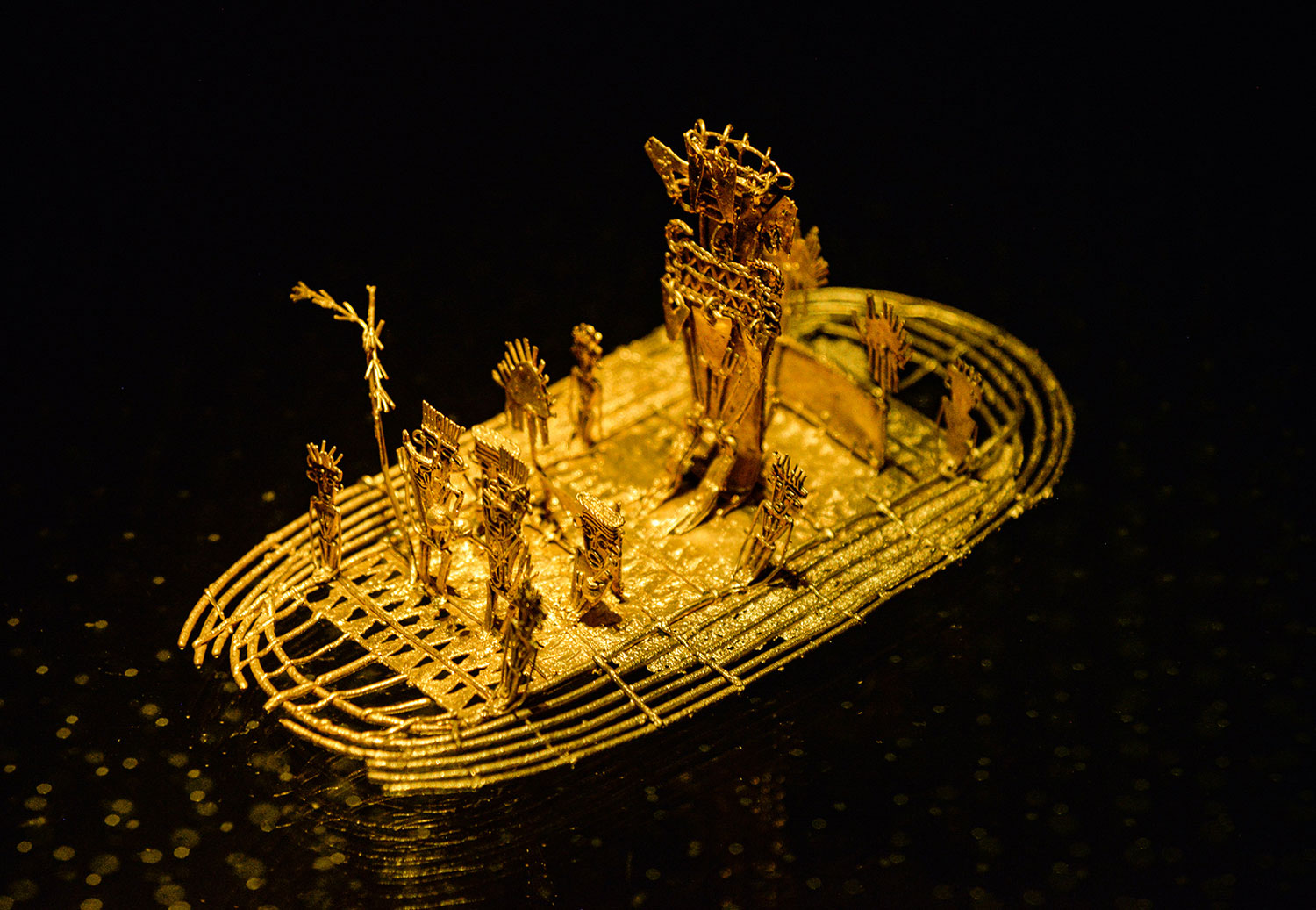Find the traces of El Dorado at the Gold Museum and the Archaeological Museum of Bogota. Try ancestral flavors and play Tejo to wind up this legendary journey.

This space exhibits millenary objects of the Muisca culture present in the Cundiboyacense highlands (Sopó, Guatavita, Tabio, Tenjo, and Ubaté); in the east (Choachí and the eastern hills of Bogotá); and in Boyacá (Tunja, Sogamoso, Duitama, Villa de Leiva, Tenza Valley, Ramiriquí and Turmequé).
Located to the east of the foundational square, it is the sample of the religious syncretism that consisted in linking indigenous beliefs with the Catholic faith. Thus, it went from being a space to receive the solstice (Muisca) and became a space where God resides (Catholic).
Built in 1686, it stands out for its neo-classical style: three naves with columns and Roman arches. The decorative painting keeps elements of religious syncretism between the indigenous gods and the saints of Catholicism. The mural painting of the time restored during 2003-2005, standing out traditional elements such as the inner door and the pulpit.
One of the icons of the city; the most popular myth says that there is where Bogotá was founded. In pre-colonial times, the place was known by the Muiscas as Thibsaquillo (land of rest in the Chibcha language) and was used as a point of reconcilation with the gods Chía (Moon) and Sue (Sun) because of its location on the slopes of the Eastern Hills (Cerros Orientales).
A scene that seeks to highlight and promote the indigenous heritage through the production and consumption of an ancestral drink "Chicha" (Facua). A space to have a historical and practical experience around the ancestral, sacred and golden seeds. The ritual includes the tasting of the four sacred beverages: chicha, zhuke, guarapo and chirrinchi.
An experience to explore and recognize the ancestral muisca diet based on stews and own dough. The corn will be the protagonist, as well as fruits, vegetables and productos of the altiplano, area where ancient settlers lived.
This scene began working in 1939, bringing together one of the most important pre-columbian art collection in the world (34.000 prehispanic pieces). The Muisca raft, the poporo Quimbaya and other indigenous ornament made with tumbaga and gold, allows to comprenhend the ancestral world view through goldsmithing and pottery.
A way to pay tribute to the only Colombian indigenous sport (inheritance from the indigenous people) who practiced this sport in the framework of commercial encounters (barter). The visitor will live an experience based on a game known ancestrally as "turmequé" that generates joy, union and conversation, typical values of the Muisca community.